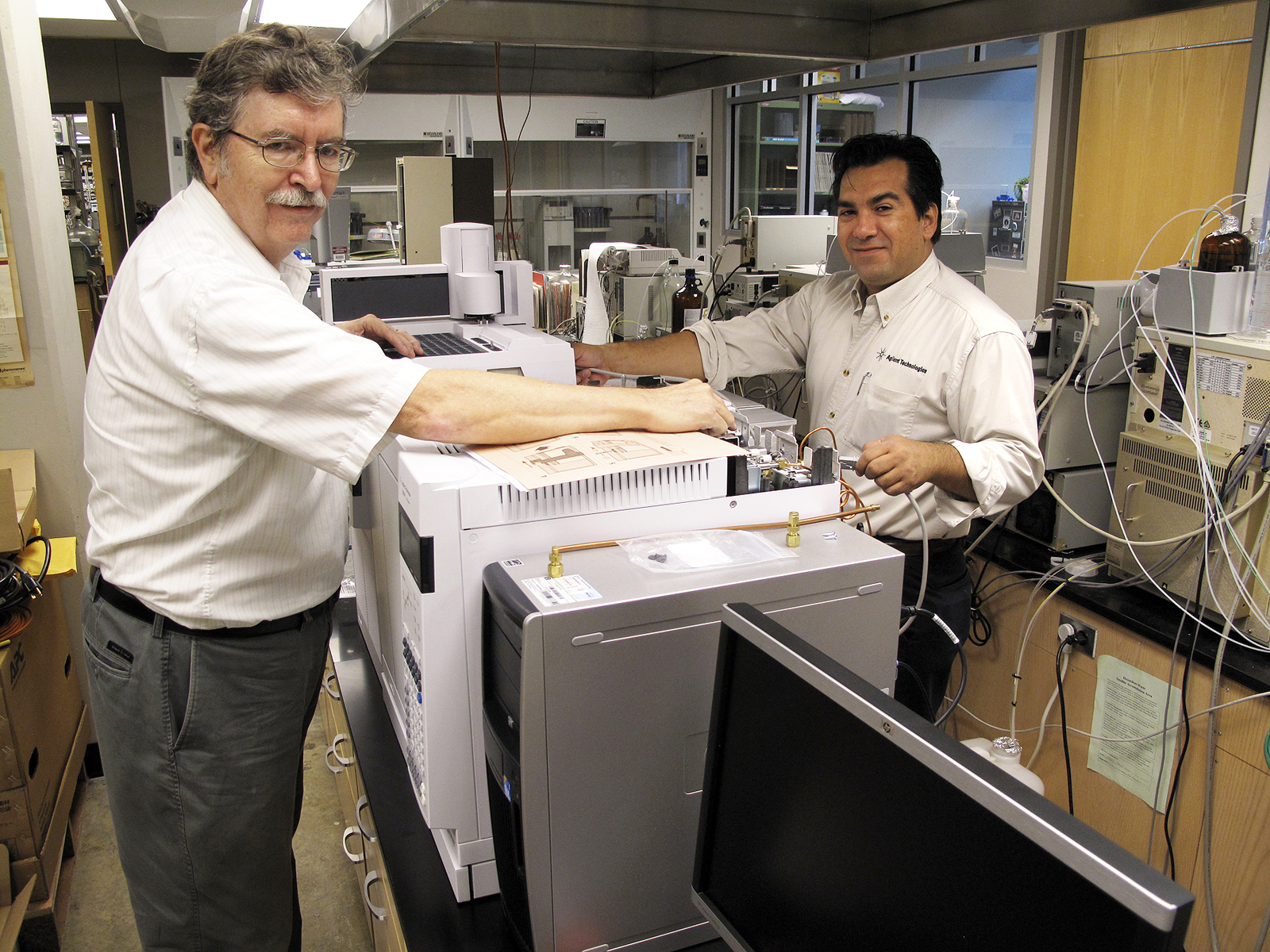Contact: Jim Laird

Photo by: Jim Laird
STARKVILLE, Miss.--A new test method developed by State Chemical Lab scientists at Mississippi State University for Gulf of Mexico seafood is expected to help protect the buying public and get commercial fishermen back to business.
Lab personnel received a boost for the new method recently when Agilent Technologies, Inc., donated a high-end mass spectrometer that analyzes seafood samples to determine levels of polycyclic aromatic hydrocarbons. PAHs are the primary oil contaminants that affect seafood. Agilent engineers completed installation of the new instrument at Hand Chemical Laboratory the first week of July.
"Repetition and precision in the testing process are essential," said associate professor Kang Xia, who also serves as director for the Research Division and the Industrial and Agricultural Services Division of the Mississippi State Chemical Lab. "The lab's current instrument isn't reliable. It is over 10 years old and has suffered numerous mechanical and software failures due to its advanced age and heavy use. The new instrument will prevent this from happening."
In addition, the new instrument shortens the turnaround time between testing a sample and providing results to regulatory agencies. With the new piece of equipment, it will take about two and a half days to take 20 samples, run tests, and have the results. This method takes less time than the current NOAA method, which takes five to six days. That difference in speed is critical, Xia said.
"We have an urgent situation in the Gulf of Mexico," she said.
The lab is working on a package to send to the Food and Drug Administration for approval of the new test, and expects to have it ready by the end of July. Findings will also be submitted to a peer-reviewed publication.
And what's the price tag on that mass spectrometer? According to Xia, it's approximately $230,000.
"Agilent has given us an option to purchase the equipment at a reduced price after one year of usage," she said.
But buying the instrument might not be an option, she added. The State Chemical Lab has seen the same funding cuts other agencies have experienced recently, and Xia expects additional budget reductions.
To date, the lab has received no payment from any source for some 50 tests it has already run, but they continue to be committed to ensuring a rapid turnaround, Xia said.
The cost per test is approximately $450 for the normal 60-day turnaround time, but, "We have been testing samples as soon as they are received because of the urgency, and that costs four times as much," she explained. "That's $90,000 so far, with no end in sight."
While the lab continues to seek external funding, "The samples keep coming--sample collection is ongoing by the [Mississippi] Department of Environmental Quality and State Department of Health," Xia noted. "In the short term, this test is about food safety, but we will be looking longer term at the ecological exposure of PAHs and dispersants in the Gulf."
The university's top administrator for research echoed Xia's commitment to the Gulf's recovery.
"Mississippi State's research, service and outreach are making a difference now, and we will continue to provide long-term leadership as the region recovers from the environmental and economic effects of the oil spill," said David Shaw, the land-grant institution's vice president for research and economic development.
In June, BP gave a $10 million grant to the Mississippi State-led Northern Gulf Institute to meet immediate research needs related to the Deepwater Horizon disaster. That initial funding is part of some $500 million that the company has pledged to short- and long-term research in the Gulf of Mexico and communities affected by the spill.